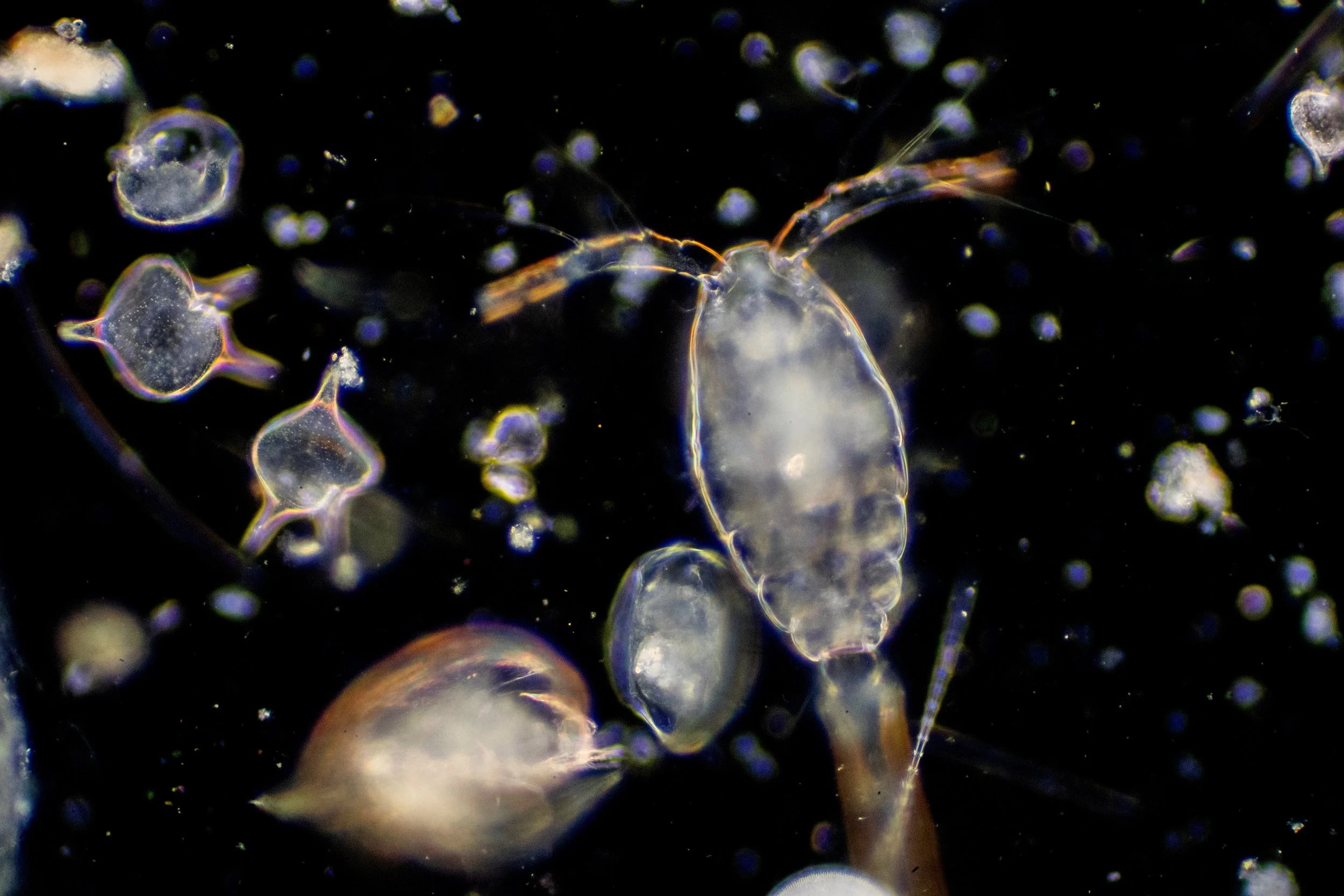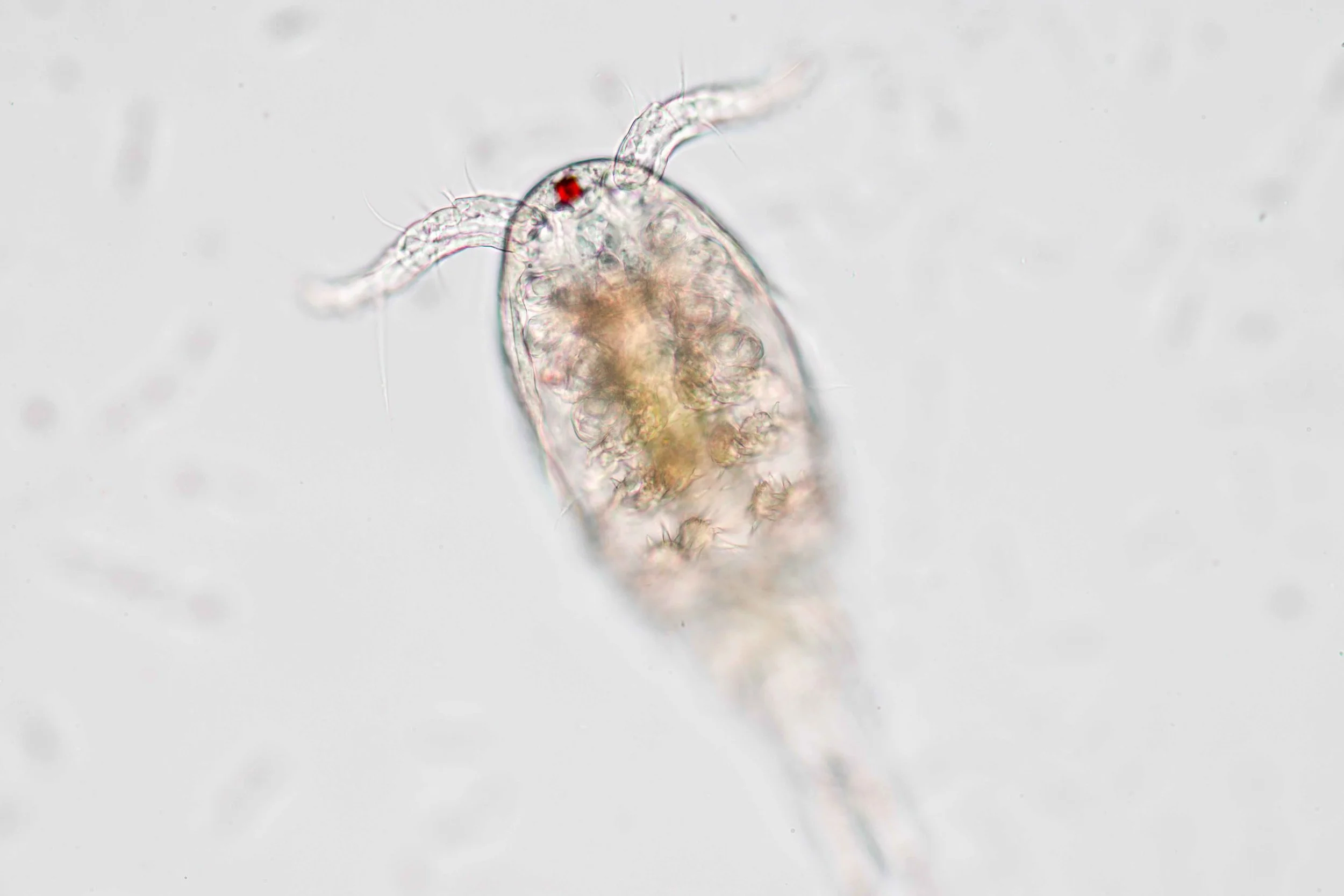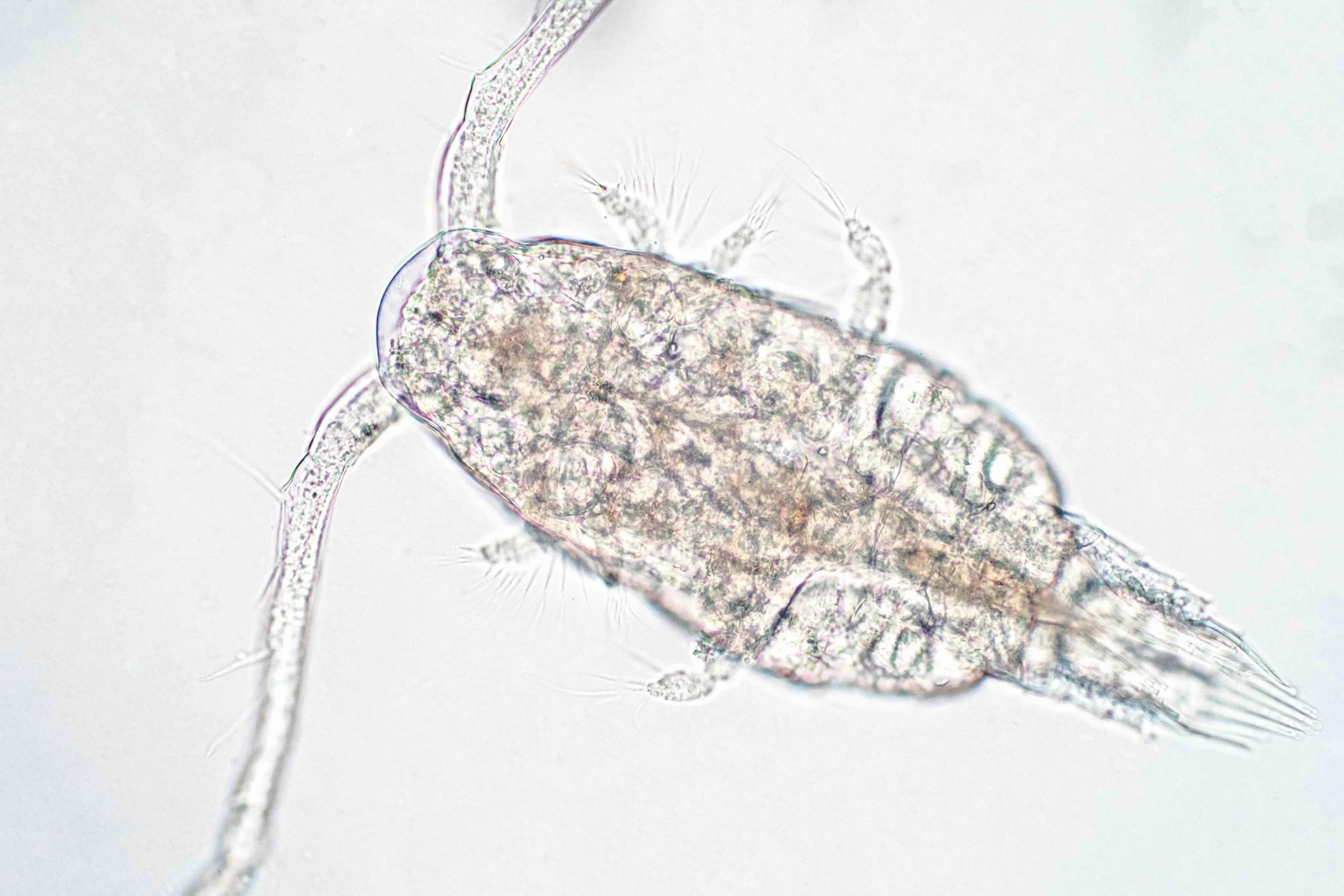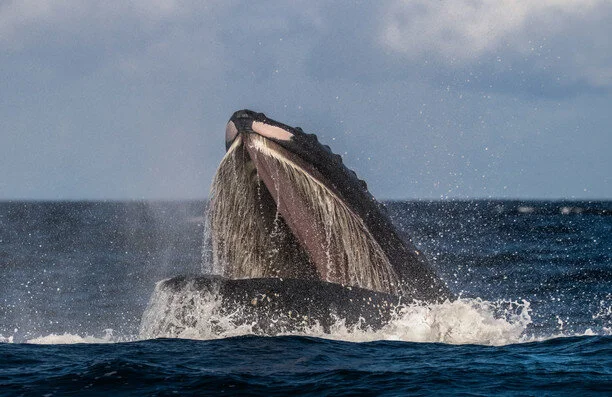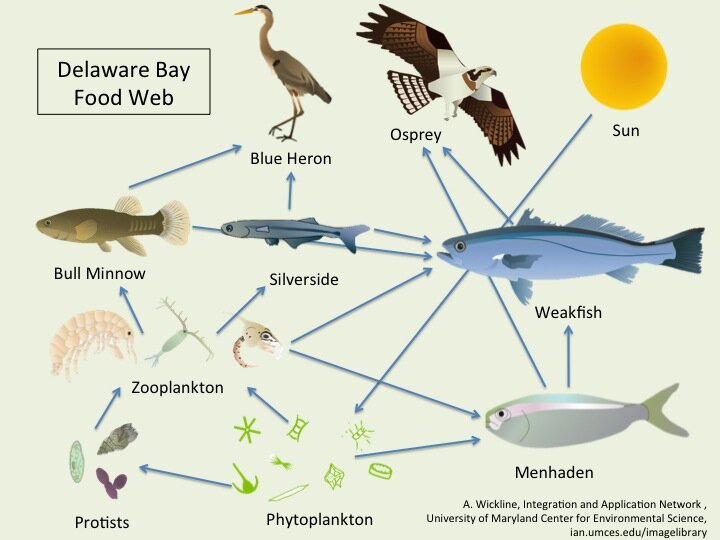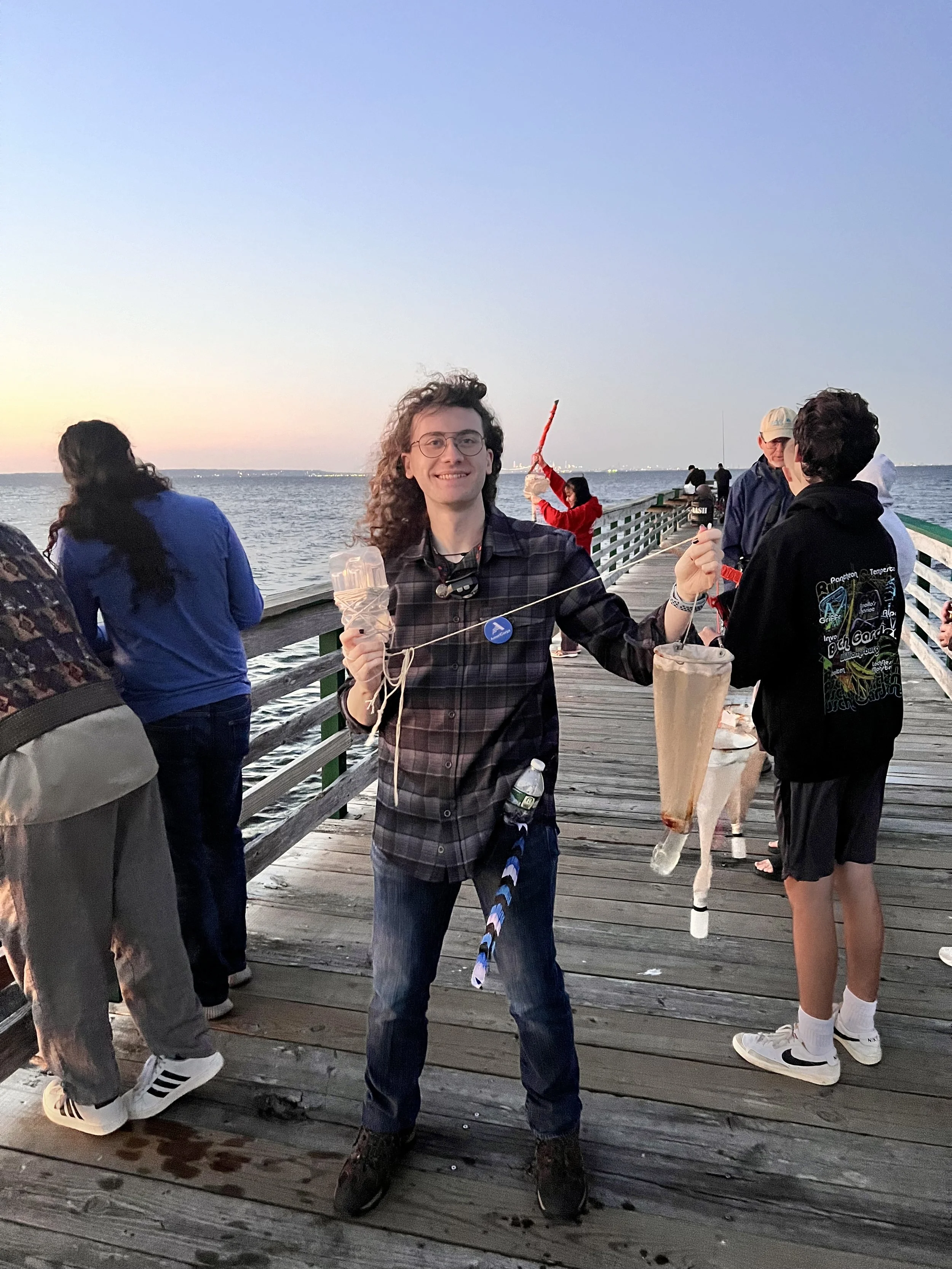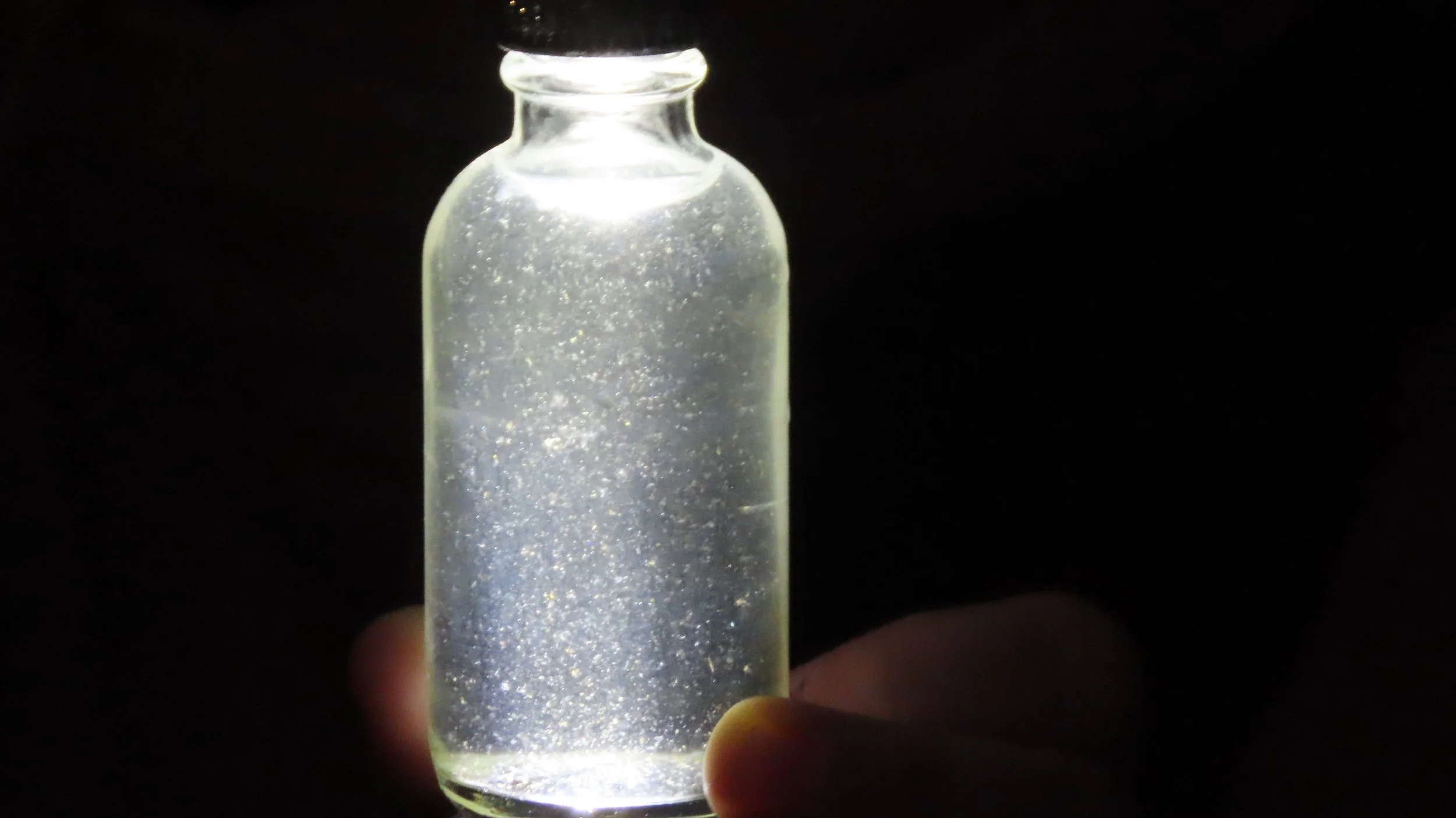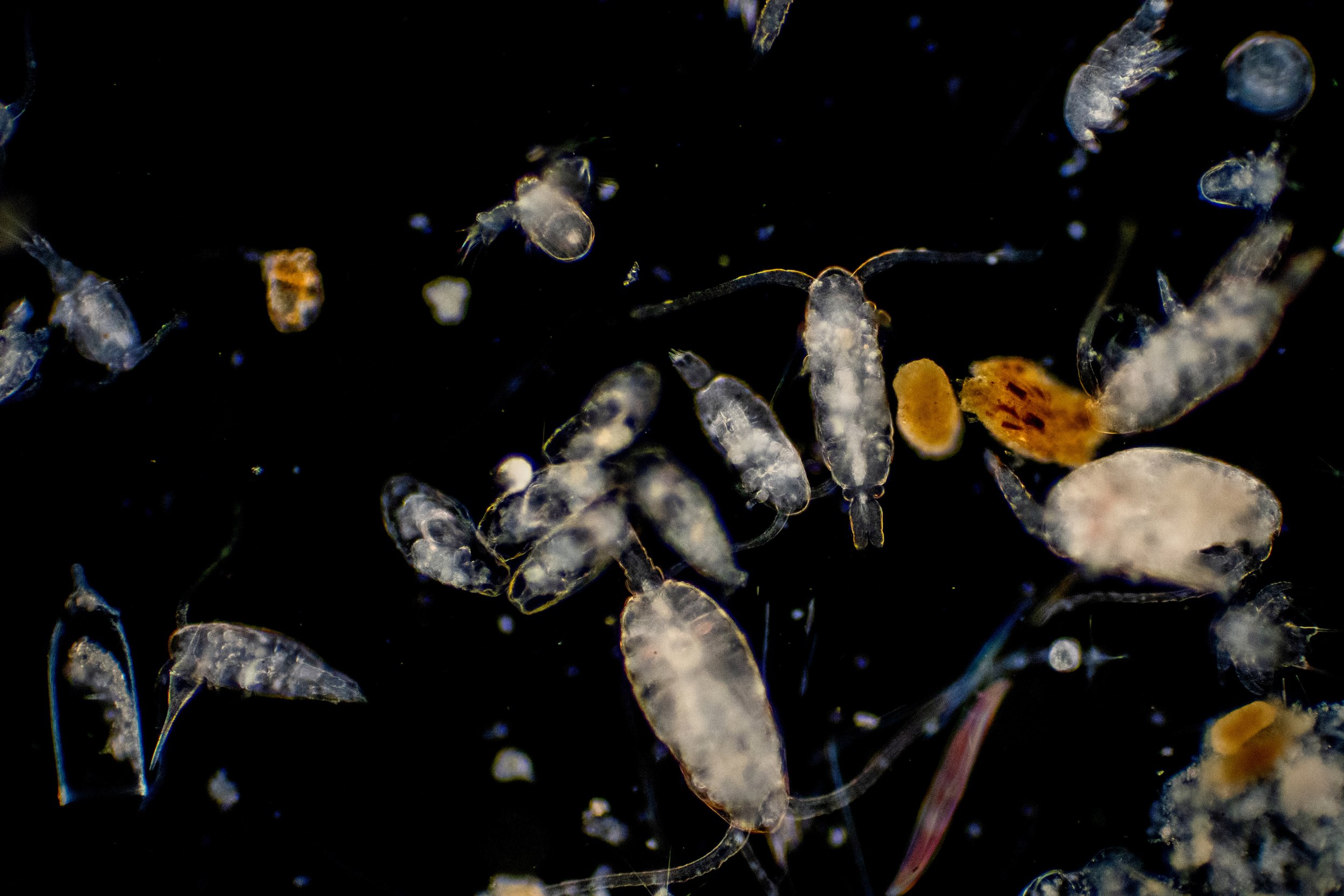
Plankton Research Along The Jersey Shore!
Save Coastal Wildlife is the only non-governmental organization conducting a community science program devoted to better understanding and monitoring our plankton population along the Jersey Shore.
Larvae of a burrowing anemone species found on August 7, 2021 (approximately at 9:00pm) in the Shark River, NJ.
Plankton are a rarely seen and often misunderstood part of life along the Jersey Shore, but they are an important part of an aquatic food chain and provide the world with up to 80% of the world with oxygen. Through their birth, growth, death and decay, plankton play an essential role in the global carbon cycle.
Without plankton, the coastal and estuarine waters of New Jersey would be devoid of life. Plankton are fundamental to the survival of larger animals from Atlantic Silversides to Atlantic Menhaden, from bluefish to blue whales
Why Study Plankton?
Plankton are a diverse group of organisms that mostly are free-floating microscopic plants, animals, fish larvae, bacteria, protozoans, viruses and other microorganisms. They generally cannot swim; instead, plankton are transported by tides and currents. While plankton in a water column can move up and down, many cannot manage sustained forward movement. The name plankton, like the word planet, comes from a Greek term meaning "wanderer.
A plankton sample taken on Saturday, February 18, 2023 (approximately at 3:00pm) at Barnegat Light State Park, NJ. The sample shows several species fop copepods, including Pseudocalanus spp., diatoms, and other forms of life.
Help Save Coastal Wildlife Study Plankton!
Sign up to receive emails from Save Coastal Wildlife. We routinely send out emails with volunteer information and community science opportunities. to interested people.
What types of Plankton can I find?
Diatoms are algae and are the only organism on the planet with cell walls composed of transparent, opaline silica. Diatoms produce at least 50% of the air we breathe. Image from https://diatoms.org
Phytoplankton are plants and are the “primary producers” in an aquatic food chain. Although tiny in individual size, these microscopic organisms are just as vital to life on Earth as rainforests or wetlands. Just like plants on land, phytoplankton make their energy through photosynthesis or from sunlight to grow. Millions of years ago, phytoplankton helped transform the atmosphere on Planet Earth. Phytoplankton started to release great amounts of oxygen into the atmosphere to pave the way for higher or more sophisticated life forms to exist, including people. Without phytoplankton photosynthesis, the atmosphere would consist of carbon dioxide (CO2) plus a small amount of nitrogen, the atmospheric pressure would be 60 times higher than the air we breathe, and the planet’s air temperatures would hover around 300°C. (Physical conditions similar to those found on Earth’s close planet - Venus).
Today, phytoplankton accounts for about 50 percent or more of all photosynthesis on the planet, making them one of the world’s most important producers of oxygen and are vital organisms to sustain life as we know it on Planet Earth. Phytoplankton rely on nutrients found in their surroundings, such as phosphate, nitrate, and calcium, to thrive. Most phytoplankton exist as single-cells organisms and can occur in vast numbers when they bloom.
Two species of copepod, which are a group of small crustaceans found in nearly every freshwater and saltwater habitat.
2. Zooplankton are small marine creatures that eat phytoplankton and then become food for fish, crustaceans, and other larger animal species. Zooplankton are primary consumers and are a critical element in the food chain and are preyed upon by every filter-feeding organism along the Jersey Shore, including many species of bivalve shellfish and baleen whales, including humpback whales. Zooplankton are by far the most abundant group of animals in the world's oceans.
Two general groups of zooplankton exist: (1) holoplankton are species that remain planktonic throughout their entire life cycle including copepods, and (2) meroplankton are those species that are larval stages of larger life forms like fish, crabs or shrimp.
Even popular and powerful fishes like bluefin tuna, blue marlin, bluefish, and winter flounder start off as larvae that will eventually adopt a swimming lifestyle. Remarkably, some fishes, including trout and salmon, can detect the smells and sounds of their spawning home and can swim long distances to reach it.
A plankton sample taken on July 20, 2024 around Sandy Hook Bay at 8:30pm. The video shows a bristle worm larvae and other forms of life.
Copepods:Key links in an Aquaitc Food Web
Copepods are small aquatic crustaceans and are one of the most numerous groups of animal life in aquatic communities. Copepods inhabit a huge range of salinities, from fresh water to hypersaline conditions, and they can be found virtually everywhere there is water. There are many different species of copepods, seven or eight thousand to over 20,000 species. Many have a somewhat cylindrical, segmented body, one simple eye, two antennae and an exoskeleton.
Copepods are a key link in the coastal and ocean food webs. The copepod eats diatoms and other phytoplankton —and is eaten, in turn, by larger drifters, larval fishes and filter-feeders including sharks and whales. Small fishes feed on them and are in turn eaten by bigger fishes, seabirds, seals and whales. We, too, depend on fishes nourished by copepods and other species of plankton.
A single copepod may eat from 11,000 to 373,000 diatoms in 24 hours! Copepods are also fast swimmers, and can travel distances around 295 feet (90 m) per hour — the human equivalent of swimming 50 miles per hour (81 km/h).
How are copepods important?
Food chain: Copepods are a key link in n aquatic food chain, eating phytoplankton and being eaten by fish, whales, and other marine life.
Fisheries: Copepods support commercial and recreational fisheries.
Ecosystem health: Copepods help maintain healthy coastal habitats and ecosystems.
Scientific research: Copepods are important for studying marine ecosystems and human health. For example, tracking copepod species richness over time can help assess the effects of climate change.
Copepods are some of the most abundant animals on the planet. They live in the ocean in numbers that are too vast to count.
What are the goals of the Plankton Project?
Larva of Shore Shrimp or Grass Shrimp (Palamonetes sp.) found in the Navesink River during December 2021.
At Save Coastal Wildlife nonprofit, we study the population and diversity of plankton because around the world plankton are often used as indicators of the health of water due to their short life span and since also they are very sensitive to both short-term and long-term environmental changes.
When we conduct plankton studies, volunteer members of Save Coastal Wildlife nonprofit are seeking to answer one or two main questions:
A humpback whale seen feeding along the Jersey Shore either on a mixture of small fish and plankton or predominantly on plankton (copepods).
Baleen whales and filter feeding sharks depend on some of the smallest creatures on Earth for their survival.
2. What kind of seasonal changes are occurring with plankton?
The seasonal timing of occurrence of plankton, specifically phytoplankton, is influenced by several factors including water temperature. But now water temperatures are increasing along the Jersey Shore due to the effects of global warming.
Is there enough food for Baleen Whales and Filter Feeding Sharks?
Zooplankton, specifically copepods, fish, crab and barnacle larvae, are an important food source for baleen whales found along the Jersey Shore including humpback whales (Megaptera novaeangliae), fin whales (Balaenoptera physalus), minke whales (Balaenoptera acutorostrata), and the critically endangered North Atlantic right whale (Eubalaena glacialis).
Zooplankton are also the direct food source for the largest fish in the world, the whale shark (Rhincodon typus) and the second largest fish in the world, the basking shark (Cetorhinus maximus). Both species of sharks can sometimes be observed feeding along the Jersey Shore during the warmer months of the year.
A long term study of zooplankton population species can help to piece together a story of how whales and filter-feeding sharks and other fish use the Jersey Shore during late winter and early spring and into the autumn for feeding. The population of these large animals is only as strong as its food source and nutritional level within an aquatic food web.
Seasonal cycle of phytoplankton activity in the Gulf of Maine, Georges Bank, and Mid-Atlantic Bight. Image from NOAA Fisheries.
Plankton are the base of the aquatic food web, as plant-like members of the plankton (phytoplankton) that have chlorophyll-a and fix carbon through photosynthesis, and in turn are grazed upon by animal members of the plankton (zooplankton). These zooplankton are then eaten by larger animals such as fish (nekton). Image from the University of Delaware,
Typically, as winter ends in March, soils in tidal wetlands along the Jersey Shore warm and discharge nutrients into estuarine and ocean waters from spring rains and melting snow packs. This creates vast populations of plankton during late March, April, and May. This primary productivity provides an important source of energy and food for populations of migrating fish, whales, birds and other animals as they spawn or pass through to feed on fish.
Tropical storms in August, September, and October serve to fuel another surge in nutrients and plankton populations. This surge helps to feed the fall migration of fish, whales, birds and other wild animals along the Jersey Shore.
Over the winter, many species of copepods often diapause or reduce their metabolic activity at great depths in the water prior to rising to the surface in the spring. During the spring is when many copepods molt into adults and reproduce to complete their life cycle.
Are we finding microplastics in our plankton samples?
Zooplankton eating microplastic. Image from CNET
Sadly, plastic debris have become ubiquitous in coastal and marine systems along the Jersey Shore, entering the environment via accidental release, mismanaged waste streams, and also through the everyday use of certain personal care products and textiles that shed synthetic fibers into wastewater. Now, small plastic detritus, termed “microplastics”, are a widespread and common find of coastal and marine ecosystems along the Jersey Shore . Ingestion of microplastics by marine biota, including mussels, worms, fish, and seabirds, has been discovered by scientists, but despite their vital ecological role in marine food-webs, the impact of microplastics within the water-column masquerading as zooplankton remains under-researched, or even plastic eaten by zooplankton. Research has shown that microplastics are readily ingested by several zooplankton taxa.
Research at Save Coastal Wildlife seeks to find microplastics fibers or other debris during our plankton studies to determine how many bits of microplastics are within each sample. Zooplankton, which make up a base of a coastal and marine food web are ingesting tiny particles of plastic pollution, and that is bad news for the biodiversity along the Jersey Shore.
Can you spot the plastic fibers from this plankton sample?
How Do We Collect Our Plankton Samples?
With a plankton net in hand, volunteers with Save Coastal Wildlife nonprofit take regular plankton samples at various locations along the Jersey Shore. Volunteers will collect two plankton samples per excursion.
Plankton samples may be obtained in two different ways. You may tow a plankton net from either a boat or a dock or a plankton net may be used with waders while towing or walking the net through the water.
Samples should only be taken from sunset to sunrise. Although plankton cannot swim against the horizontal flow of water, many species of plankton can travel vertically in a water column. This vertical migration can occur daily or seasonally. Many species of zooplankton spend the daylight hours in the relative safety of deep, dark waters where they are less visible to predators. They rise to the surface at night to feed on the phytoplankton. Samples should be taken to maximize this time of feeding by zooplankton.
Once volunteers have completed towing a plankton net, they will then take the samples home to look underneath a microscope to identify various types of plankton.
When you look at a drop of seawater, it seems to be clear. However, when you put the drop of water under a microscope, you will see that the water is teeming with life. Nearly every creature in the sea spends either part or all of its life drifting in the ocean.
Use an eye dropper to collect a few drops of the sample and place in a petri dish. Observe the sample with a microscope. Since the plankton can move up and down in the drop, you will need to refocus your microscope to see plankton at different levels.
Use the guide below to help identify collect and different types of plankton along the Jersey Shore.
Sara Genke, an intern with Save Coastal Wildlife during summer 2023, created this poster for Stockton University.




